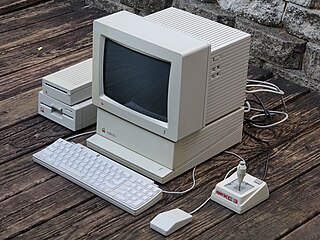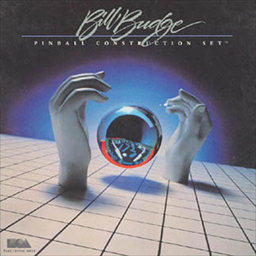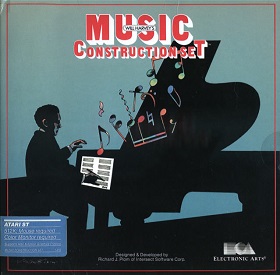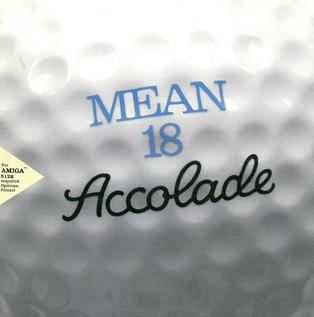
The Apple II series of microcomputers was initially designed by Steve Wozniak, manufactured by Apple Computer, and launched in 1977 with the Apple II model that gave the series its name. It was followed by the Apple II Plus, Apple IIe, Apple IIc, and Apple IIc Plus, with the 1983 IIe being the most popular. The name is trademarked with square brackets as Apple ][, then, beginning with the IIe, as Apple //. In terms of ease of use, features, and expandability, the Apple II was a major advancement over its predecessor, the Apple I, a limited-production bare circuit board computer for electronics hobbyists.

Atari ST is a line of personal computers from Atari Corporation and the successor to the company's 8-bit home computers. The initial model, the Atari 520ST, had limited release in April–June 1985, and was widely available in July. It was the first personal computer with a bitmapped color graphical user interface, using a version of Digital Research's GEM interface / operating system from February 1985.

The Apple IIGS is a 16-bit personal computer produced by Apple Computer. It is the fifth and most powerful of the Apple II family. It is compatible with earlier Apple II models, but has a Macintosh look and feel, and resolution and color similar to the Amiga and Atari ST. The "GS" in the name stands for "Graphics and Sound", referring to its enhanced multimedia hardware, especially its state-of-the-art audio.

Deluxe Paint, often referred to as DPaint, is a bitmap graphics editor created by Dan Silva for Electronic Arts and published for the then-new Amiga 1000 in November 1985. A series of updated versions followed, some of which were ported to other platforms. An MS-DOS release with support for the 256 color VGA standard became popular for creating pixel graphics in video games in the 1990s.

Pinball Construction Set is a video game by Bill Budge written for the Apple II. It was originally published in 1982 through Budge's own company, BudgeCo, then was released by Electronic Arts in 1983 along with ports to the Atari 8-bit computers and Commodore 64.

A digital audio workstation is an electronic device or application software used for recording, editing and producing audio files. DAWs come in a wide variety of configurations from a single software program on a laptop, to an integrated stand-alone unit, all the way to a highly complex configuration of numerous components controlled by a central computer. Regardless of configuration, modern DAWs have a central interface that allows the user to alter and mix multiple recordings and tracks into a final produced piece.
The Print Shop is a desktop publishing software package originally published in 1984 by Broderbund. It was unique in that it provided libraries of clip art and templates through a simple interface to build signs, posters and banners with household dot-matrix printers. Over the years, the software has been updated to accommodate changing file formats and printer technologies.

Mavis Beacon Teaches Typing is an application software program designed to teach touch typing. Released in late 1987 by The Software Toolworks, the program aimed to enhance users' typing skills through a series of interactive lessons and games.
Artworx was a Naples, Florida software company that produced and supported a line of computer games from 1981 to 2015. It is named after the founder's given name. At first the company published a variety of games, including titles in adventure and arcade-action genres, but were later best known for a strip poker series.

Will Harvey's Music Construction Set (MCS) is a music composition notation program designed by Will Harvey for the Apple II and published by Electronic Arts in 1983. Harvey wrote the original Apple II version in assembly language when he was 15 and in high school. MCS was conceived as a tool to add music to his previously published game, an abstract shooter called Lancaster for the Apple II.
Will Harvey is an American software developer and Silicon Valley entrepreneur. He wrote Music Construction Set (1984) for the Apple II, the first commercial sheet music processor for home computers. Music Construction Set was ported to other systems by its publisher, Electronic Arts. He wrote two games for the Apple IIGS: Zany Golf (1988) and The Immortal (1990). Harvey founded two consumer virtual world Internet companies: IMVU, an instant messaging company, and There, Inc., an MMOG company.
Cut & Paste is a word processor published in 1984 for the Apple II, Atari 8-bit computers, Commodore 64, IBM PC compatibles, and IBM PCjr. It is one of the few productivity releases from game developer and publisher Electronic Arts, along with the contemporaneous Financial Cookbook. In the UK it was distributed by Ariolasoft.
Jam Session is the 1988 successor to Studio Session, a 1986 software program for Macintosh computers, for music creation and playback. It was created by Macintosh and Newton pioneer Steve Capps and musician Ed Bogas. Jam Session was published by Broderbund Software. Studio Session was published by Bogas Productions.

Starglider is a 3D video game published in 1986 by Rainbird. It was developed by Jez San under his company name Argonaut Software. The game is a fast-moving, first-person combat flight simulator, rendered with colourful wireframe vector graphics inspired by San's love of the 1983 Atari coin-op Star Wars.

Mean 18 is a golf video game designed by Rex Bradford with graphics by George Karalias, both of Microsmiths, and released by Accolade for MS-DOS compatible operating systems in 1986. It was ported to the Amiga, Apple IIGS, Atari ST, and Macintosh. It includes an editor allowing players to create their own courses. In 1989, Atari Corporation published a port for the Atari 7800 console. A version for Atari 8-bit computers was in development in 1989 but was cancelled.

3D Construction Kit, also known as 3D Virtual Studio, is a utility for creating 3D worlds in Freescape. Developed by Incentive Software and published by Domark, it was released in 1991 on multiple platforms. The game originally retailed for £24.99 for the 8-bit version, and £49.99 for 16-bit version and the 32-bit Acorn Archimedes version, in the United Kingdom. A sequel, 3D Construction Kit II, was released in 1992, but only available on Amiga, Atari ST and MS-DOS.

The Chessmaster 2000 is a computer chess game by The Software Toolworks. It was the first in the Chessmaster series and published in 1986. It was released for Amiga, Apple II, Atari 8-bit computers, Atari ST, ZX Spectrum, Commodore 64, Amstrad CPC, MSX, Macintosh, and IBM PC compatibles.











